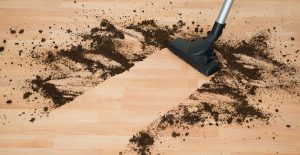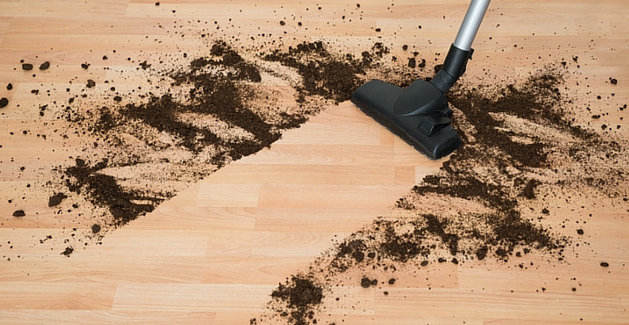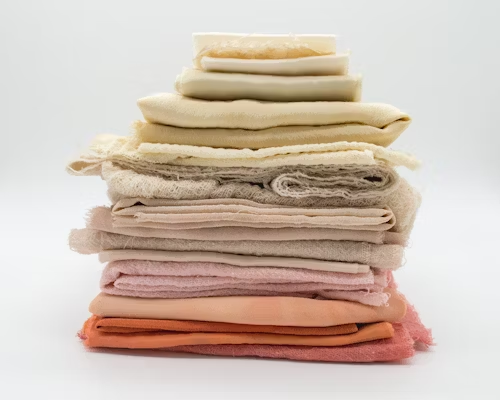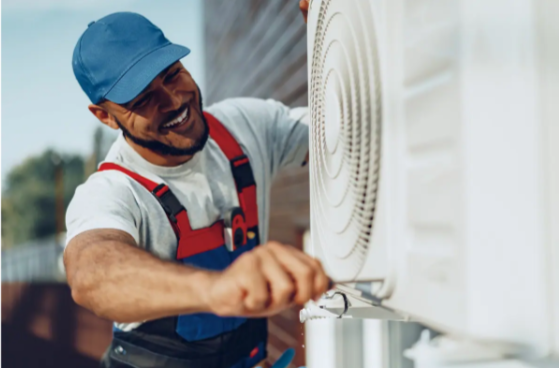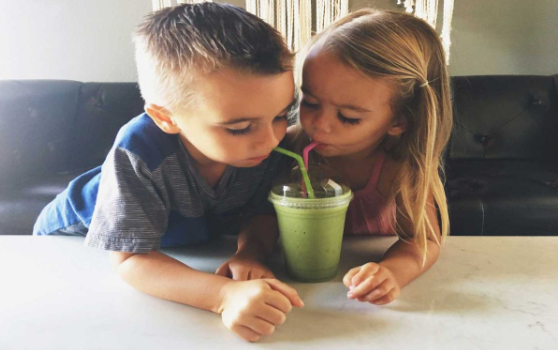You love your furry friend, but that puddle on your beautiful hardwood floor? Not so much. Pet accidents happen, and when they do on hardwood, the clock starts ticking. Every minute counts before that urine soaks deeper into the wood, creating stains that could haunt your floors for years.
Did You Know?
Nearly 67% of U.S. households own pets, and hardwood floor damage from pet accidents costs homeowners an average of $1,200 to $2,500 in repairs annually.
If you’ve ever scrubbed a stain only to have your dog return to the same spot days later, you know the frustration. The wrong cleaner will not only fail to remove the stain, but it can actually make things worse by damaging your floor’s finish or trapping odors that encourage repeat accidents.
Why Pet Stains are a Common Problem on Hardwood Floors
Pet stains are common because hardwood is porous and absorbs liquids quickly. Dogs and cats may have accidents due to age, training issues, or medical conditions. Once urine hits the wood, it doesn’t just sit on the surface, but it penetrates through the finish into the wood fibers within minutes. Wood floors lack the protective barrier that tile or vinyl offers. This makes them vulnerable to moisture damage, discoloration, and permanent odor absorption.
How the Right Cleaner Can Protect Wood Floors and Extend Their Life
The best hardwood floor cleaner for pet stains neutralizes acids and enzymes before they break down the wood’s protective finish. Quality cleaners create a barrier against future damage while removing existing stains. Using proper products can extend your floor’s life by 10-15 years and prevent costly refinishing projects.
Regular maintenance with pet-safe cleaners keeps the finish intact and prevents the wood from absorbing moisture that leads to warping or cupping.
Why Pet Urine Damages Wood (Acids, Salts, and Ammonia)
Pet urine contains uric acid, ammonia, and salt crystals that chemically attack wood finishes. The pH level of urine ranges from 5.5 to 7.0, making it acidic enough to break down polyurethane and oil-based sealants.
Here’s what happens when urine hits your hardwood:
- Ammonia evaporates but leaves salt deposits that draw moisture from the air
- Uric acid crystals penetrate the wood grain and oxidize lignin (wood’s natural binding agent)
- Dark stains appear as black or gray discoloration
- Deeper penetration occurs the longer the urine sits, sometimes reaching the subfloor
Difference Between Fresh and Set-In Stains
Fresh and set-in stains require completely different approaches:
Fresh stains:
- Remain on or near the surface
- Can be cleaned within 24-48 hours
- Respond well to enzymatic cleaners
- Wood hasn’t absorbed much liquid yet
- Finish may still be intact
Set-in stains:
- Have penetrated through the finish into the wood fibers
- Appear as dark spots that won’t lighten with surface cleaning
- Require sanding, bleaching, or professional refinishing
- Damage has reached the wood’s cellular structure
Pro Tip:
If you can feel a rough texture where the stain is, the finish has been compromised, and the wood itself is damaged.
How Pet Stains Affect Odor, Color, and Finish
Pet stains create three types of damage:
- Odor: Uric acid crystals remain in the wood and reactivate with humidity, releasing an ammonia smell
- Color: Oxidation turns wood dark brown, gray, or black, depending on the wood species
- Finish: Acids dissolve protective coatings, leaving wood vulnerable to scratches and moisture
The ammonia smell intensifies over time because bacteria continue breaking down urine compounds trapped in the wood. This odor signals your pet to mark the same spot again, creating a cycle of repeat accidents.
Types of Hardwood Floor Cleaners for Pet Stains
Enzymatic Cleaners – Breaking Down Odors and Urine Crystals
Enzymatic cleaners use natural bacteria and enzymes to digest organic matter like urine, feces, and vomit. These cleaners break down uric acid crystals at a molecular level, completely eliminating odor rather than masking it. They work by producing enzymes (protease, lipase, amylase) that target specific compounds in pet waste.
Did You Know?
Enzymatic cleaners need 10-15 minutes of dwell time to work effectively. Wiping too quickly stops the enzymatic process before the stain is broken down.
These are the best hardwood floor cleaner options for pet owners because they’re specifically designed to handle biological stains without harsh chemicals.
Hydrogen Peroxide and Vinegar-Based Cleaners – For Deep Cleaning
- Hydrogen peroxide (3% solution) acts as a mild bleach that lifts dark stains from wood without destroying the finish when used correctly. Mix 1 part hydrogen peroxide with 2 parts water for safe application on sealed hardwood.
- Vinegar (diluted to a 1:10 ratio with water) works on fresh stains by neutralizing ammonia and breaking down salts. However, vinegar is acidic and can dull certain finishes like wax or oil-based polyurethane if used repeatedly.
Pro Tip:
Always test these solutions on an inconspicuous area first. Some finishes react poorly to acids.
Bio-Enzymatic and Eco-Friendly Options for Pet-Safe Cleaning
- Bio-enzymatic cleaners use plant-based surfactants and natural enzymes that are safe if pets lick the floor after cleaning. These products contain no ammonia, bleach, or phosphates. They’re biodegradable and won’t leave toxic residues.
- Look for products certified by the EPA’s Safer Choice program or carrying the Green Seal certification. These meet strict standards for human and pet safety while maintaining cleaning effectiveness.
Oil-Based vs. Water-Based Cleaners – Which to Use and Avoid
- Water-based cleaners are safe for polyurethane and water-based finishes. They clean without leaving residue and dry quickly. Most enzymatic and bio-enzymatic cleaners are water-based.
- Oil-based cleaners work on oil-finished floors and unfinished wood. They add a protective layer but can build up over time, making floors look dull.
- Avoid oil-based cleaners on polyurethane-finished floors as they leave a film that traps dirt and makes future stains harder to remove.
Step-by-Step Guide: Removing Pet Stains from Hardwood Floors
Step 1 – Blot and Absorb the Spill Immediately
Act within 2-5 minutes of the accident. Speed is critical—urine can penetrate the finish in just 10-15 minutes.
Here’s how to blot effectively:
- Use paper towels or a clean cloth
- Blot (don’t rub) from outside toward the center to prevent spreading
- Press firmly to absorb as much liquid as possible
- For larger spills, place multiple layers of paper towels over the area
- Stand on the towels to draw liquid out of the wood
- Replace towels until they come up mostly dry
Step 2 – Apply a Hardwood-Safe Enzymatic Cleaner
Enzymatic cleaners need time to work their magic. Here’s the proper application process:
- Spray or pour cleaner directly onto the stain
- Cover the affected area plus 2 inches beyond the visible stain
- Let it sit for 10-15 minutes without wiping or disturbing it
- This dwell time allows enzymes to break down uric acid crystals
For set-in stains:
- Apply cleaner and cover with plastic wrap
- Keep it moist for 30 minutes
- Extended contact time helps penetrate deeper stains
Step 3 – Neutralize Odors and Lift Residue
After the dwell time, use a damp (not wet) microfiber cloth to wipe the area. The enzymatic action will have loosened the stain and neutralized odors. For stubborn odors, apply a second treatment and extend the dwell time to 20 minutes.
Pro Tip:
Don’t rinse with water after using enzymatic cleaners. Rinsing dilutes the enzymes and reduces effectiveness. The cleaner will be residue-free.
Step 4 – Deep Clean and Disinfect Without Damaging the Finish
Once the stain is lifted, clean the area with a pH-neutral hardwood floor cleaner to remove any remaining residue. Spray lightly and wipe with a clean microfiber mop or cloth. This step disinfects without introducing moisture that could damage the wood.
Avoid steam cleaners and excessive water. Moisture is hardwood’s enemy and can cause warping, cupping, or finish damage, even when cleaning pet stains.
Step 5 – Sand and Reseal for Stubborn or Deep Stains
For stains that have penetrated the finish, light sanding may be necessary. Here’s the restoration process:
- Use 120-grit sandpaper on the stained area only
- Sand in the direction of the wood grain
- Feather the edges to blend with the surrounding wood
- Apply wood bleach (oxalic acid solution) if discoloration remains
- Let the wood dry completely (24 hours minimum)
- Apply matching finish (polyurethane, oil, or wax)
- Feather the edges so the repair blends seamlessly
Deep stains that reach the subfloor require professional refinishing.
Recommended Products for Cleaning Pet Stains and Spills
Bona® Hardwood Floor Cleaner – Gentle and Residue-Free
Bona is a water-based, pH-neutral cleaner that’s safe for all polyurethane-finished hardwood floors. It doesn’t leave residue and dries quickly. While not specifically designed for pet stains, it’s excellent for maintenance cleaning after treating stains with enzymatic cleaners.
Bona is Greenguard Gold certified, meaning it meets strict chemical emissions standards for indoor air quality.
Arboritec® Cleaner – Deep Clean for Professional Results
Arboritec Cleaner removes dirt, grime, and residue buildup without damaging floor finishes. It’s ideal for deep cleaning after pet accidents or before resealing your floors. This cleaner restores the natural luster of wood and prepares the surface for touch-ups or recoat applications.
Use it diluted with water for regular cleaning or full strength for tough stains.
Rubio Monocoat® Surface Care Spray – Safe for Oil-Finished Floors
If your floors have an oil-based finish, Rubio Monocoat Surface Care Spray is your go-to cleaner. It’s designed to clean and refresh oil-finished hardwood while preserving the protective layer. The formula is plant-based, low-VOC, and safe for both pets and kids.
For added protection, follow up with Rubio Monocoat Universal Maintenance Oil.
Nature’s Miracle® Hard Floor Cleaner – For Odors and Deep-Set Stains
Nature’s Miracle uses bio-enzymatic technology specifically formulated for sealed hardwood, tile, and laminate. It targets pet urine, feces, and vomit stains while eliminating odors at the source. The formula is safe for use around pets and children.
This cleaner works on both fresh and set-in stains. For best results on older stains, apply and let sit for 15-20 minutes before wiping.
Murphy® Oil Soap – For Natural Wood Shine and Light Stains
Murphy’s Oil Soap is a vegetable oil-based cleaner suitable for oil-finished and unfinished hardwood. It adds a protective layer while cleaning light stains. Mix 1/4 cup per gallon of water for regular cleaning.
Important:
Don’t use Murphy’s on polyurethane-finished floors. The oil creates a buildup that dulls the finish over time.
Professional and DIY Solutions (Hydrogen Peroxide Mix, Vinegar Solution)
DIY solutions can work for light stains when commercial cleaners aren’t available.
DIY Enzymatic Booster:
- 1 cup hydrogen peroxide (3%)
- 3 tablespoons baking soda
- 2 drops dish soap
- Mix and spray on stains
- Let it sit for 10 minutes before wiping
Vinegar Solution for Fresh Stains:
- 1 cup white vinegar
- 10 cups of water
- Apply and let sit 5 minutes
- Rinse with clean water
Preventing Future Pet Stains and Spills
Training and Routine to Reduce Accidents
Establish consistent bathroom breaks every 4-6 hours for dogs. Take pets out first thing in the morning, after meals, and before bed. Reward outdoor bathroom behavior immediately with treats.
For indoor cats, maintain proper litter box hygiene:
- Provide 1 litter box per cat plus one extra
- Clean boxes daily
- Place them in quiet, accessible locations
- Use unscented, clumping litter
Important: Sudden accidents often signal medical issues—consult a vet if accidents increase.
Using Mats and Rugs in Pet Zones
Place washable, waterproof-backed rugs in areas where pets spend most time. Rugs provide an absorbent barrier that protects hardwood while being easy to clean.
Best locations for protective rugs:
- Entry points and doorways
- Feeding areas
- Pet sleeping spots
- High-traffic zones
Choose rugs with these features:
- Rubber backing that won’t slip
- Waterproof barrier to prevent moisture seepage
- Machine-washable material
- Non-toxic, pet-safe construction
Lift and clean under rugs monthly to prevent hidden moisture damage.
Regular Sealing and Maintenance of Hardwood Floors
- Reseal hardwood floors every 3-5 years to maintain the protective barrier against moisture and stains. High-traffic areas and pet zones may need resealing every 2-3 years.
- Apply a thin coat of polyurethane or floor polish annually to refresh the finish. This maintenance layer makes the best hardwood floor cleaner more effective because it works on the protective finish rather than the bare wood.
Choosing Pet-Friendly Finishes and Protective Coatings
Water-based polyurethane offers the best protection against pet stains. It creates a hard, non-porous surface that resists moisture penetration. Look for finishes rated at 9H hardness on the pencil hardness scale.
Top finish options for pet owners:
- Aluminum oxide finishes: Commercial-grade durability, scratch-resistant, ideal for active pets with claws
- Water-based polyurethane: Non-porous, fast-drying, low odor during application
- Oil-based polyurethane: Extremely durable, but takes longer to cure and has stronger fumes
Avoid wax finishes if you have pets. Wax is porous and absorbs liquids easily, making stain removal nearly impossible.
Common Mistakes to Avoid When Cleaning Pet Stains
Using Too Much Water or Harsh Chemicals
Excess water seeps between floorboards and under the finish, causing warping, cupping, and mold growth. Never pour water directly onto hardwood or use soaking wet mops. Damp cleaning is sufficient.
Avoid these damaging chemicals:
- Ammonia: Strips finish and smells like urine to pets (encourages repeat marking)
- Undiluted bleach: Damages wood fibers and discolors the finish
- Abrasive cleaners: Scratch and dull the protective coating
- Products with harsh solvents: Dissolve polyurethane and oil-based finishes
Skipping the Drying Step
Always dry treated areas with a clean towel after cleaning. Leaving moisture to air dry allows it to penetrate deeper into seams and the wood structure.
Why drying matters:
- 30 minutes: Moisture begins damaging the finish
- 2-3 hours: Permanent swelling or discoloration can occur
- 24 hours: Warping and cupping may develop
Use fans to accelerate drying in humid conditions.
Ignoring Odor Neutralization (Leading to Repeat Accidents)
Cleaning only the visible stain without addressing odor molecules leaves scent markers that your pet’s sensitive nose can still detect. This signals to them that the spot is an appropriate bathroom area.
Pro Tip:
Even if you can’t smell anything, your dog’s nose is 10,000 times more sensitive than yours. Always use enzymatic cleaners to neutralize odors at the molecular level, not just mask them with fragrances.
When to Call a Professional for Hardwood Floor Restoration
Professional help is needed when:
- Stains have turned wood black or dark gray
- The finish feels rough or powdery
- Warping or cupping has occurred
- Multiple coats of finish have penetrated
- Odor persists after repeated enzymatic treatments
You can test penetration depth by lightly scratching the stained area with your fingernail. If the discoloration goes deeper than the scratch, it has penetrated beyond the finish layer.
Final Thoughts
Pet stains don’t have to mean the end of your beautiful hardwood floors. Remember that speed is everything, blot immediately, use the best hardwood floor cleaner for the job, and never let moisture sit on wood.
Prevention matters just as much as treatment. Regular sealing, pet-friendly finishes, and consistent training reduce accidents and protect your investment. When DIY methods aren’t enough, professional restoration can bring even deeply damaged floors back to life. Your floors are worth protecting. Every accident is an opportunity to clean correctly and prevent future damage.
Want to give your hardwood floors the care they deserve? At Rustic Wood Floor Supply, they understand that your floors are more than just surfaces. If you’re dealing with stubborn pet stains or looking to prevent future damage, they’ve got premium cleaners, finishes, and sealants that actually work.
FAQs
What type of cleaner is best for pet stains on hardwood floors?
Enzymatic cleaners are best for pet stains because they break down organic matter and neutralize odors without damaging the wood finish. They eliminate uric acid crystals that cause recurring odors.
Can vinegar be used to clean pet urine from hardwood floors?
Diluted vinegar can help clean fresh pet urine, but it may dull certain finishes. Always test on a small area and rinse with water after use to prevent finish damage.
How should I treat a fresh pet spill on hardwood flooring?
Blot the spill immediately, apply a hardwood-safe cleaner, gently scrub the area, and dry thoroughly. Quick action prevents moisture from penetrating the wood and causing permanent damage.
Will pet urine stains damage my hardwood floors permanently?
If not cleaned promptly, pet urine can soak into the wood, causing stains, odor, and finish damage. Deep penetration may require sanding or professional refinishing to remove completely.
Are all hardwood floor cleaners safe for use around pets?
Not all cleaners are pet-safe; look for labeled, non-toxic formulas specifically designed for use around animals. Avoid harsh chemicals like ammonia and undiluted bleach that can harm pets.


